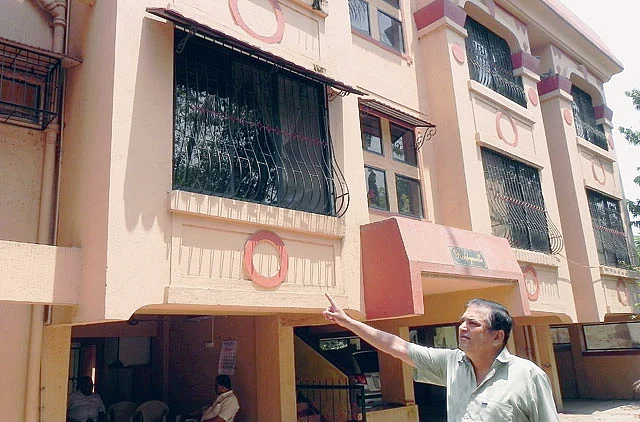Mumbai: The mammoth task of moving 80,000 families from Mumbai airport's periphery to make way for expansion and modernisation hasn't really started but local residents have been on a warpath asking authorities to resettle them under a justifiable government policy.
Time and again, "we have asked the Mumbai International Airport Ltd (Mial), which is running the Chhatrapati Shivaji International Airport (CSIA), in a joint venture with the Airports Authority of India, to show us the master plan but they have not responded at all," Nicholas Almeida, ex-municipal corporator and now a relentless crusader for the rights of the people living here, told Gulf News.
Residents want to be rehabilitated under the National Rehabilitation and Resettlement Policy 2007 (NRRP) which protects the interests of displaced people whose livelihood is adversely affected by land acquisition.
In what could be the largest acquisition of land and inter-city resettlement in India's urban history, the central government's NRRP is more suitable than Maharashtra's scheme — Slum Rehabilitation Authority (SRA), argue residents.
Most vociferous among the 80,000 families are 7,000 original property-owning inhabitants, with 400 families belonging to the East Indian community. "We are not encroachers," emphasises Almeida, an East Indian himself.
"We did not come from outside to set up hutments here. We are sons of the soil living on ancestral property but we have been ignored all along," he said, seated in a makeshift booth of the Sahar Citizens Forum (SCF), at Sahar village, adjacent to the CSIA's cargo complex.
Colonial rule
The East Indian community was first recognised in 1896 when they, converted to Christianity by the Portuguese 400 years ago, did not wish the British colonial government to confuse them with Goans, Mangaloreans and other Christian settlers in the region.
They, therefore, decided to call themselves East Indians so as to impress upon the British they were the earliest local Christians and should therefore be given preference in employment. They were scattered across the Salsette island (Bombay) including Bandra, Kurla, Thane and Bhayander.
East Indians in Sahar village were mainly engaged in agriculture and had to give up their land when the British government decided to build an airport here during the Second World War.
"We readily gave up the land but got no compensation," said Alan Boothello, 70, who once owned chunks of land here.
"We were then known as landlords but have now become beggars," he says.
Agriculturist
Ronnie Machado owned 22 acres and is now left with just six acres near Leela Kempinski hotel where he grew leafy vegetables until "MIAL started dumping debris on my land to forcibly acquire it," and adds that he has all the documents to prove he is the rightful owner.
Another East Indian, Melville Gonsalves, who lives with his siblings and their families in Sahar village, said: "We are in total opposition to the acquisition as it is not for any airport development but for merely commercial purposes to build luxury hotels. "During the war, we gave up our land willingly. The unused land was never returned to us, as was the agreement."
The big difference, he notes, is that the government earlier acquired the land directly but is now doing so to pass it on to a private party.
Taking up their cause is Father Alwyn D'Souza of Sahar's Our Lady of Health Church. "We are advising residents not to repair, buy or sell their properties and keep all their documents in order. Many say they have been hearing of acquisition since the 1940s. But we tell them that this time it is real."
Sign up for the Daily Briefing
Get the latest news and updates straight to your inbox
Network Links
GN StoreDownload our app
© Al Nisr Publishing LLC 2025. All rights reserved.
